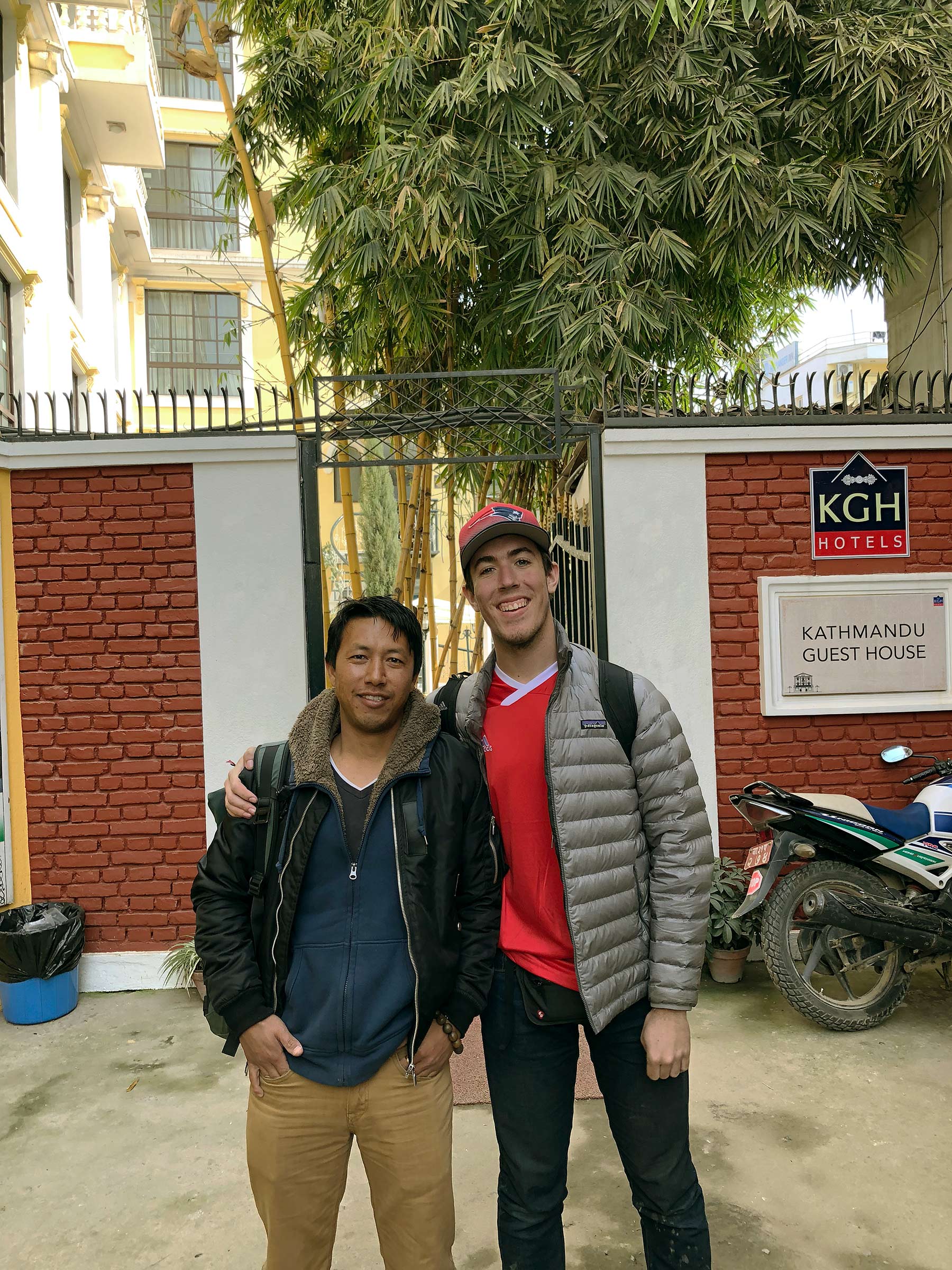Service Without Borders, Concrete Canals, and Dumplings

One of the things that drew me to Virginia Tech was the Ut Prosim emphasis on service. At my visit to campus as a prospective student, they used Service Without Borders (SWB) as an example. That fall at Gobbler Fest, I found SWB and then went to the first meeting. I really love that it’s a smaller group, how you work alongside people and have more of a part in the project. I thought that as a freshman, I would have no chance to travel yet—but SWB leadership chooses who participates based on why you want to go and what you can contribute. Everyone who is passionate and committed will travel. You demonstrate commitment by fundraising, attending the planning meetings, and doing at least five hours of local service across two events each semester. This spring, we have worked with Habitat for Humanity in the New River Valley.
SWB projects in Nepal and Tanzania developed from long-term connections between Virginia Tech and host communities. In 2015, a major earthquake damaged infrastructure across Nepal. Some of the original founding members of SWB approached Professor Tom Hammett about starting a project in Nepal.
Tom speaks Nepali fluently, having done Peace Corps there. Our main contact in Nepal, Tsewang, speaks English fluently, so we have two primary translators between our volunteers and the village of Dhumba, where we are working. The cross-cultural nature of our work makes it special. Service Without Borders strives to work with a host community in order to bring them to a spot where they're self-sustaining and don’t need our support any more. We have committed to work with the village of Dhumba for a period of years. We are trying to incorporate homestays in Dhumba for more cultural exchange.
Our project team stays in Jomsom, a two mile hike from Dhumba. The elevation difference (Dhumba Lake is at about 9,000’ above sea level; Blacksburg, 2,000') is most noticeable when lifting and working, for example when we are shoveling or mixing concrete. A lot of our fundraising is to move equipment—the cement, rebar, and all the tools that they need in the village to repair an irrigation canal damaged in the earthquake that the village relies on for its orchards and crops. The previous irrigation canal was primarily dirt and a lot of the lower section was silted in and overgrown with brush when we arrived in December 2017. Marc Shepheard and I walked the two kilometer length of the canal, but even with the GPS from Professor Brian Benham (BSE) we had a hard time following where it went. It was in poor shape. One of the things SWB is focusing on now is how to make the irrigation canal truly self-sustaining—so that if SWB is not there to maintain it, it will continue to function.
My absolute favorite moment from that trip was when we were building the warming hut. There’s a point when we were making cement in an assembly line: some of the villagers were mixing, then we would put it on a round plate and pass it along…there was a lot of non-verbal communication happening. Working physically alongside one another, I experienced directly why we’re there—that cross-cultural exchange. We also learned methods of construction used by the villagers in Dhumba. This culminated in the final meeting with the village in their town hall area at the end of our stay. Tom and Tsewang translated as we talked about what we had accomplished together and what they wanted to accomplish in the future.
The exchange came full circle last summer when Tsewang came to the U.S. I went up to New York and went around with him for a day and then we took the bus back to Pennsylvania—it was like a vacation for him, and he brought a friend from Nepal who lives in New York. He taught me to make momos (dumplings) while he stayed with us at my parents’ house in Pennsylvania for three days.
This year, I have been co-leading the Nepal project with Mark as we plan our return to Dhumba in May right after the semester ends. We will spend about two weeks working on the canal. What motivates me as an engineering student is gaining and sharing technical knowledge that I have in order to give back and help others. I found my stride through SWB and then went to Civil Engineering department info sessions. They really emphasized that Civil Engineering is about making a difference. Then I went to Nepal and worked on water infrastructure and thought: I could really enjoy doing this as a career. The Nepal project has also inspired me to pursue Peace Corps after college.




